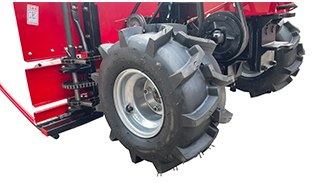Oct . 15, 2024 15:03 Back to list
Achieving Proper Balance for Brake Drum Performance and Safety
Brake Drum Balancing Importance and Techniques
Brake drums are essential components of a vehicle's braking system, playing a crucial role in ensuring safety and performance. The balancing of brake drums is an important yet often overlooked aspect of vehicle maintenance that can have significant implications on the overall function of the braking system, tire wear, and the driver’s experience. This article will explore the importance of brake drum balancing, the causes of imbalance, and techniques for achieving proper balance.
Understanding Brake Drum Imbalance
Brake drum imbalance occurs when the weight distribution of the drum is uneven. This can happen due to manufacturing defects, uneven wear, or damage over time. An unbalanced brake drum can lead to various problems, including vibrations, uneven brake wear, and reduced stopping power. Moreover, it may result in other components of the braking system being subjected to additional stress, which can cause premature failure and increased repair costs.
Why Is Brake Drum Balancing Important?
1. Enhanced Safety The primary purpose of a vehicle's braking system is to stop the vehicle safely and effectively. An unbalanced brake drum can lead to inadequate braking performance, increasing the risk of accidents. A well-balanced brake drum ensures consistent braking force, helping drivers maintain control, especially in emergency situations.
2. Improved Vehicle Handling An unbalanced brake drum can cause vibration and instability, which diminishes the overall handling of the vehicle. This affects not only braking but also the behavior of the vehicle during acceleration and cornering. Properly balanced drums contribute to a smoother ride and better cornering ability.
3. Extended Component Life When a brake drum is properly balanced, the associated components, including brake shoes, wheel bearings, and suspension parts, experience less stress. This reduces wear and tear, leading to a longer lifespan for these components and lowering maintenance costs over time.
brake drum balancing

4. Reduced Noise Imbalanced brake drums can produce unwanted noise during operation, which can be annoying and indicate potential issues within the braking system. Balancing drums can lead to quieter operation, enhancing the overall driving experience.
Techniques for Brake Drum Balancing
1. Static Balancing This technique involves placing the drum on a stationary balancing machine that identifies any heavy spots. Weights can then be added or removed to achieve an even weight distribution. This method works well for identifying small imbalances that may not be noticeable during regular use.
2. Dynamic Balancing In contrast to static balancing, dynamic balancing takes into account the forces acting on the drum while it rotates. A dynamic balancing machine will spin the drum and measure vibrations, allowing for precise adjustments to be made. This is a more comprehensive approach and is particularly beneficial for high-performance vehicles.
3. Regular Inspections To maintain proper balance, regular inspections of the brake system are essential. Mechanics should check for signs of wear and damage, ensuring that all components are in good condition. Replacement of worn parts and timely maintenance can help prevent imbalance issues.
4. Professional Servicing For optimal results, it is advisable to have brake drums balanced by a professional mechanic. They possess the tools and expertise necessary to accurately assess and correct imbalances, ensuring safety and performance.
In conclusion, brake drum balancing is a critical aspect of vehicle maintenance that directly affects safety, performance, and longevity of the braking system. By understanding the importance of proper balance and employing effective techniques, vehicle owners can ensure their safety on the road while also enhancing the overall efficiency of their vehicles. Regular inspections and professional servicing are key to maintaining balanced brake drums and, by extension, a reliable and safe driving experience.
-
HINO Industrial Solutions - ¡Ң���ຽ��е��������˾ | Advanced Technology&Reliability
NewsJul.13,2025
-
HINO Industrial Efficiency-Jiangsu Hino Industrial|Productivity Optimization&Cost Reduction
NewsJul.12,2025
-
HINO-¡Ң���ຽ��е��������˾|Advanced Industrial Solutions&Energy Efficiency
NewsJul.12,2025
-
Premium Brake Drum Iveco – Durable Drum Brake Drum & Brake Shoe Solutions
NewsJul.08,2025
-
High-Performance Brake Drum Liza for Enhanced Safety Reliable Drum Brake Drum & Brake Shoe Solutions
NewsJul.08,2025
-
High-Quality Brake Drum MAZ – Durable Drum Brake Drum & Brake Drum and Brake Shoe for Optimal Performance
NewsJul.07,2025
